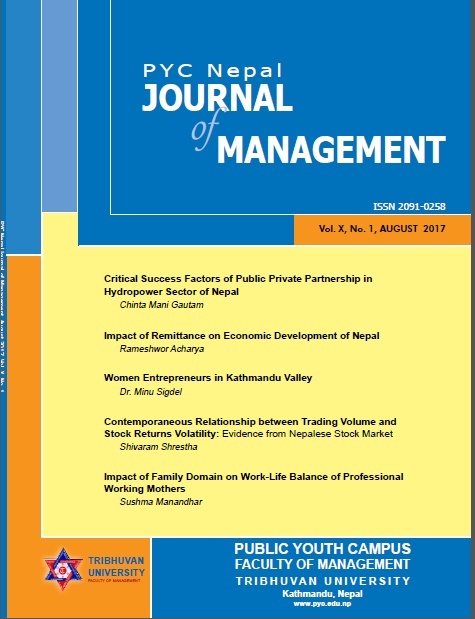Contemporaneous Relationship between Trading Volume and Stock Returns Volatility : Evidence from Nepalese Stock Market
DOI:
https://doi.org/10.3126/pycnjm.v10i1.36067Keywords:
Trading volume, Stock returns volatility, Contemporaneous relationship, GARCH, Nepalese stock marketAbstract
This paper examines the contemporaneous relation between trading volume and stock returns volatility for Nepalese stock market using monthly data for the period 2005 mid-July to 2017 mid-April. The study uses ordinary least square method and analyzes whether rising price leads to higher volume or vice versa. The study also investigates the association between trading volume and stock returns volatility based on monthly data of NEPSE index and examines the effects of trading volume on stock returns volatility using GARCH (1, 1) model. The study finds positive contemporaneous relationship between trading volume and stock return volatility. The study result indicates that the relationship between trading volume and return volatility is asymmetric. The findings strongly support the hypothesis that higher trading volume is associated with an increase in stock return volatility, but offers little support to the sequential arrival hypothesis and the mixture of distribution hypothesis. Finally, the findings support the weak-form efficient market hypothesis in Nepalese stock market.
Downloads
Downloads
Published
How to Cite
Issue
Section
License
© Public Youth Campus

